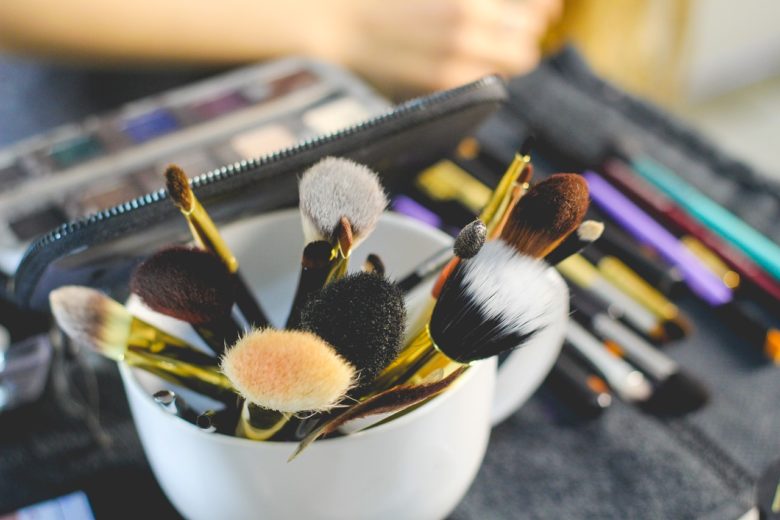
Common Beauty Industry Environmental Issues
We are reader-supported. When you buy through links on our site, we may earn affiliate commission.
This is the first of a five-post series looking into environmental issues with the beauty industry, areas it’s excelling in sustainability and where we can expect to see sustainability efforts improve in the future.
More people than ever before recognize the importance of going green to humankind’s continued existence on this planet and with good reason. The most recent National Climate Assessment strongly suggests that failing to take immediate action to address climate change will cost thousands of lives and billions of dollars.
Many people, though, don’t think about personal hygiene and cosmetic products when they think of becoming more environmentally friendly. Many store-bought cosmetics and toiletries contain toxic chemicals, and packaging waste contributes to the amount of plastics disposed of in our landfills and our water.
Switching to natural, sustainable cosmetics won’t single-handedly save the planet. However, making the switch solves one part of the environmental puzzle while at the same time leaving you looking and feeling healthier.
Environmental Issues in the Beauty Industry
Regulations and the Beauty Industry
Regulations regarding beauty products vary throughout the world. However, regulations governing the chemicals used in cosmetic production generally remain fairly lax. Indeed, of the approximately 10,500 known active chemicals used in the manufacturing of common cosmetics such as shampoos, etc., only 11 percent have been tested to measure their impact as potential carcinogens.
The European Union has instituted some measures regarding the banning of certain chemicals known to be carcinogens from cosmetics. In the USA and the rest of the world, however, cosmetic manufacturers remain largely unregulated.
In addition, little standardization exists governing the packaging manufacturers must use. As a result, cosmetic products make up much of the waste associated with single-use plastics. When these plastics end up in landfills or in the ocean, animals become entrapped in the plastics and suffocate. In addition, animals who consume plastics amass painful intestinal blockages leading them to slowly starve to death.
Creepy Chemicals
Cosmetics contain a host of chemicals that may damage the environment and even human health. A simple stroll down the cosmetic or shampoo aisle will reveal just how prevalent these chemicals are.
P-phenylenediamine, derived from petroleum, poisons plankton and other small marine animals. Hand sanitizers and deodorants often contain Triclocan, a chemical which can destroy entire ecosystems. Dioxane in shampoo and bubble bath disrupts the endocrine system and kills insects like bees.
These chemicals make up just a few of the known toxins cosmetics contain. As many remain unstudied still, the full extent of the impact cosmetics and toiletries have on the environment may be far more extensive than previously suspected.
Other Environmental Worries
In addition to releasing chemical toxins, the process of packaging and shipping cosmetics also contributes to the environmental impact.
While it’s impossible to pinpoint with 100 percent accuracy the amount of carbon emissions associated with the shipment of cosmetics from manufacturer to store, we know carbon emissions decrease air quality significantly.
Many commercial exfoliating products contain plastic microspheres which do not biodegrade. Because these microspheres are so tiny, ordinary sewer treatments cannot remove them from the water. When these spheres enter the ocean or even a nearby stream, marine life often unknowingly ingest them, and as these animals cannot digest the plastic, the spheres lodge in their intestines, causing blockage and eventual death.
In addition, many cosmetics such as perfumes and nail polishes come in glass packaging. While the glass itself doesn’t damage the environment, the additional packaging needed to prevent breakage during transport leads to the cutting down of more trees or the use of styrofoam. While technically you can recycle styrofoam, many local recycling centers still lack this capability, leading to more styrofoam waste in landfills and the ocean.
Finally, despite public outcry, many commercial cosmetic companies still test their products on animals. Others use palm oil, the cultivation of which ravages the orangutan’s only natural habitat. Those concerned about animal welfare would do well to avoid brands such as Victoria’s Secret and Maybelline to name just two.
Simple Tips to Start Greening Your Beauty Routine
Fortunately, the more the environmental movement continues to grow, the more companies seek to satisfy consumers by offering greener alternatives. Unfortunately, some companies strive to achieve a reputation as being environmentally-friendly while maintaining practices that do ecological harm.
Be wary of labels. Manufacturers love to bill products as all-natural when in reality utilizing only a single ingredient as it exists in nature. Always take the time to peruse the ingredient list prior to purchase. If you can’t pronounce many of the words on the label, chances are, the ingredients within contain environmental toxins.
If you have time and a touch of creativity, you can make your own cosmetics using natural ingredients. Natural oils, such as coconut oil, make for excellent moisturizing bases for cosmetic applications. A quick Google search reveals how you can quickly make your own mascara, foundation and more.
No time in your busy schedule to DIY when it comes to cosmetics? Seek out organic cosmetic products made with sustainability in mind. You may join an online organic cosmetic club or simply seek out products with the organic label next time you shop.
Beautify Yourself, Beautify Your World
Everyone enjoys looking and feeling their very best. In addition, most of us recognize the importance of protecting our planet so that future generations may enjoy the beauty of our earth. By gradually adding greener, sustainable practices and products into our everyday beauty routine, we can protect the earth while putting our best faces forward!
Share on
Like what you read? Join other Environment.co readers!
Get the latest updates on our planet by subscribing to the Environment.co newsletter!
About the author
Jane Marsh
Starting from an early age, Jane Marsh loved all animals and became a budding environmentalist. Now, Jane works as the Editor-in-Chief of Environment.co where she covers topics related to climate policy, renewable energy, the food industry, and more.





